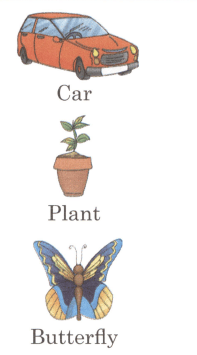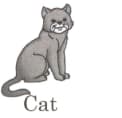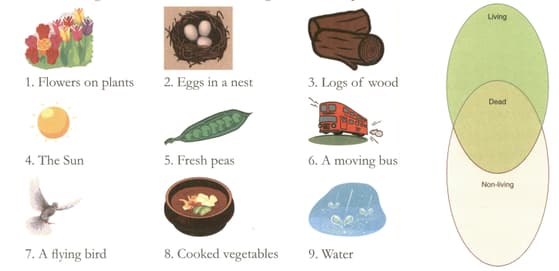MEDIUM
Earn 100
Make a list of non-living things that you use from morning till night.
Important Questions on Conduct an investigation to provide evidence that living things are made of cells; either one cell or many different numbers and types of cells.
MEDIUM
Life Sciences>From Molecules to Organisms: Structures and Processes>Conduct an investigation to provide evidence that living things are made of cells; either one cell or many different numbers and types of cells.>Structure and Function - All living things are made up of cells, which is the smallest unit that can be said to be alive. An organism may consist of one single cell (unicellular) or many different numbers and types of cells (multicellular)
a) Only components such as Temperature, water, light and soil.
b) Only components such as pathogens, parasites, predators and competitors of the organism with which they interact constantly.
c) The physiology and anatomy of organisms
d) Both a and b
MEDIUM
Life Sciences>From Molecules to Organisms: Structures and Processes>Conduct an investigation to provide evidence that living things are made of cells; either one cell or many different numbers and types of cells.>Structure and Function - All living things are made up of cells, which is the smallest unit that can be said to be alive. An organism may consist of one single cell (unicellular) or many different numbers and types of cells (multicellular)
MEDIUM
Life Sciences>From Molecules to Organisms: Structures and Processes>Conduct an investigation to provide evidence that living things are made of cells; either one cell or many different numbers and types of cells.>Structure and Function - All living things are made up of cells, which is the smallest unit that can be said to be alive. An organism may consist of one single cell (unicellular) or many different numbers and types of cells (multicellular)
A list of non-living things is given below. Tick the things which were once a part of a living thing.
MEDIUM
Life Sciences>From Molecules to Organisms: Structures and Processes>Conduct an investigation to provide evidence that living things are made of cells; either one cell or many different numbers and types of cells.>Structure and Function - All living things are made up of cells, which is the smallest unit that can be said to be alive. An organism may consist of one single cell (unicellular) or many different numbers and types of cells (multicellular)
Which of the following are living things? Colour them.

EASY
Life Sciences>From Molecules to Organisms: Structures and Processes>Conduct an investigation to provide evidence that living things are made of cells; either one cell or many different numbers and types of cells.>Structure and Function - All living things are made up of cells, which is the smallest unit that can be said to be alive. An organism may consist of one single cell (unicellular) or many different numbers and types of cells (multicellular)
Fill in the blank with the correct word from the list.
[wasting, live, washing]
All living things need water to _____.
MEDIUM
Life Sciences>From Molecules to Organisms: Structures and Processes>Conduct an investigation to provide evidence that living things are made of cells; either one cell or many different numbers and types of cells.>Structure and Function - All living things are made up of cells, which is the smallest unit that can be said to be alive. An organism may consist of one single cell (unicellular) or many different numbers and types of cells (multicellular)
EASY
Life Sciences>From Molecules to Organisms: Structures and Processes>Conduct an investigation to provide evidence that living things are made of cells; either one cell or many different numbers and types of cells.>Structure and Function - All living things are made up of cells, which is the smallest unit that can be said to be alive. An organism may consist of one single cell (unicellular) or many different numbers and types of cells (multicellular)
MEDIUM
Life Sciences>From Molecules to Organisms: Structures and Processes>Conduct an investigation to provide evidence that living things are made of cells; either one cell or many different numbers and types of cells.>Structure and Function - All living things are made up of cells, which is the smallest unit that can be said to be alive. An organism may consist of one single cell (unicellular) or many different numbers and types of cells (multicellular)
What would happen if living things do not reproduce?
MEDIUM
Life Sciences>From Molecules to Organisms: Structures and Processes>Conduct an investigation to provide evidence that living things are made of cells; either one cell or many different numbers and types of cells.>Structure and Function - All living things are made up of cells, which is the smallest unit that can be said to be alive. An organism may consist of one single cell (unicellular) or many different numbers and types of cells (multicellular)
HARD
Life Sciences>From Molecules to Organisms: Structures and Processes>Conduct an investigation to provide evidence that living things are made of cells; either one cell or many different numbers and types of cells.>Structure and Function - All living things are made up of cells, which is the smallest unit that can be said to be alive. An organism may consist of one single cell (unicellular) or many different numbers and types of cells (multicellular)
MEDIUM
Life Sciences>From Molecules to Organisms: Structures and Processes>Conduct an investigation to provide evidence that living things are made of cells; either one cell or many different numbers and types of cells.>Structure and Function - All living things are made up of cells, which is the smallest unit that can be said to be alive. An organism may consist of one single cell (unicellular) or many different numbers and types of cells (multicellular)
EASY
Life Sciences>From Molecules to Organisms: Structures and Processes>Conduct an investigation to provide evidence that living things are made of cells; either one cell or many different numbers and types of cells.>Structure and Function - All living things are made up of cells, which is the smallest unit that can be said to be alive. An organism may consist of one single cell (unicellular) or many different numbers and types of cells (multicellular)
MEDIUM
Life Sciences>From Molecules to Organisms: Structures and Processes>Conduct an investigation to provide evidence that living things are made of cells; either one cell or many different numbers and types of cells.>Structure and Function - All living things are made up of cells, which is the smallest unit that can be said to be alive. An organism may consist of one single cell (unicellular) or many different numbers and types of cells (multicellular)
Differentiate between:
Living and Non-living things
MEDIUM
Life Sciences>From Molecules to Organisms: Structures and Processes>Conduct an investigation to provide evidence that living things are made of cells; either one cell or many different numbers and types of cells.>Structure and Function - All living things are made up of cells, which is the smallest unit that can be said to be alive. An organism may consist of one single cell (unicellular) or many different numbers and types of cells (multicellular)
Write their names in the correct column.




MEDIUM
Life Sciences>From Molecules to Organisms: Structures and Processes>Conduct an investigation to provide evidence that living things are made of cells; either one cell or many different numbers and types of cells.>Structure and Function - All living things are made up of cells, which is the smallest unit that can be said to be alive. An organism may consist of one single cell (unicellular) or many different numbers and types of cells (multicellular)
EASY
Life Sciences>From Molecules to Organisms: Structures and Processes>Conduct an investigation to provide evidence that living things are made of cells; either one cell or many different numbers and types of cells.>Structure and Function - All living things are made up of cells, which is the smallest unit that can be said to be alive. An organism may consist of one single cell (unicellular) or many different numbers and types of cells (multicellular)
Look at the pictures below and decide if each one shows a living thing, a non-living thing or a dead one. Place each thing in the correct part of the circles.

EASY
Life Sciences>From Molecules to Organisms: Structures and Processes>Conduct an investigation to provide evidence that living things are made of cells; either one cell or many different numbers and types of cells.>Structure and Function - All living things are made up of cells, which is the smallest unit that can be said to be alive. An organism may consist of one single cell (unicellular) or many different numbers and types of cells (multicellular)
EASY
Life Sciences>From Molecules to Organisms: Structures and Processes>Conduct an investigation to provide evidence that living things are made of cells; either one cell or many different numbers and types of cells.>Structure and Function - All living things are made up of cells, which is the smallest unit that can be said to be alive. An organism may consist of one single cell (unicellular) or many different numbers and types of cells (multicellular)
MEDIUM
Life Sciences>From Molecules to Organisms: Structures and Processes>Conduct an investigation to provide evidence that living things are made of cells; either one cell or many different numbers and types of cells.>Structure and Function - All living things are made up of cells, which is the smallest unit that can be said to be alive. An organism may consist of one single cell (unicellular) or many different numbers and types of cells (multicellular)
MEDIUM
Life Sciences>From Molecules to Organisms: Structures and Processes>Conduct an investigation to provide evidence that living things are made of cells; either one cell or many different numbers and types of cells.>Structure and Function - All living things are made up of cells, which is the smallest unit that can be said to be alive. An organism may consist of one single cell (unicellular) or many different numbers and types of cells (multicellular)
Name the characteristic of living things that each picture depicts.



